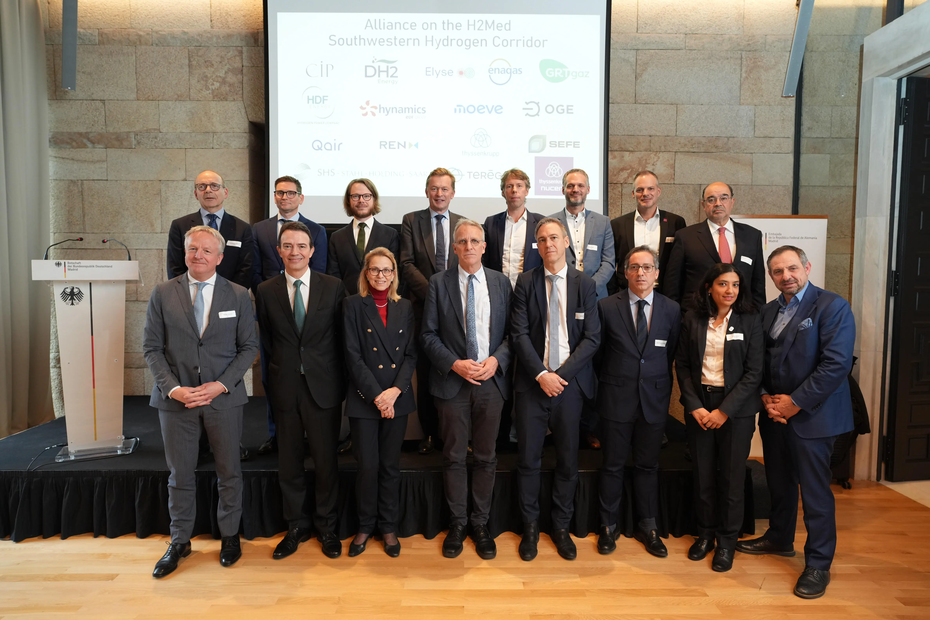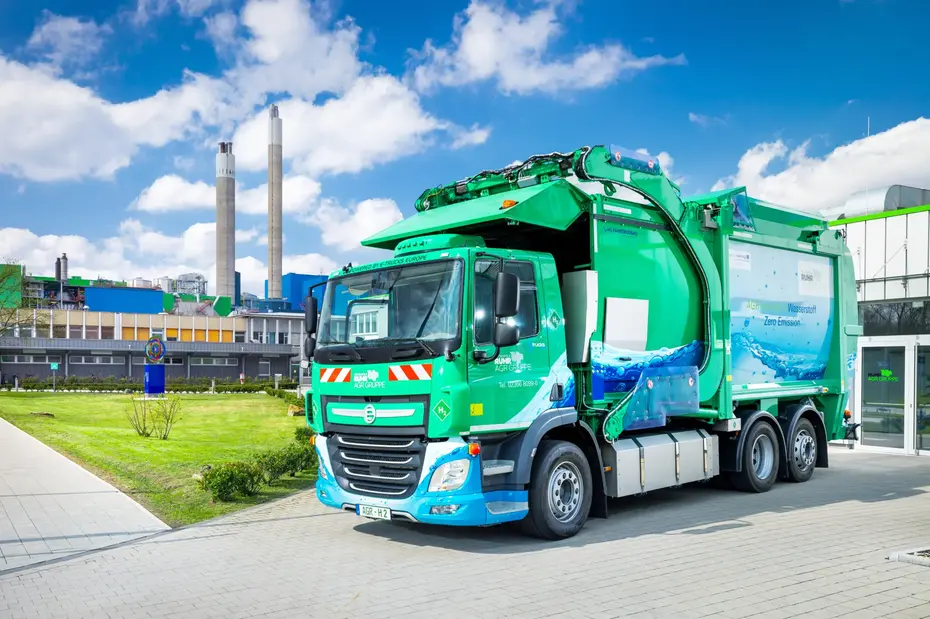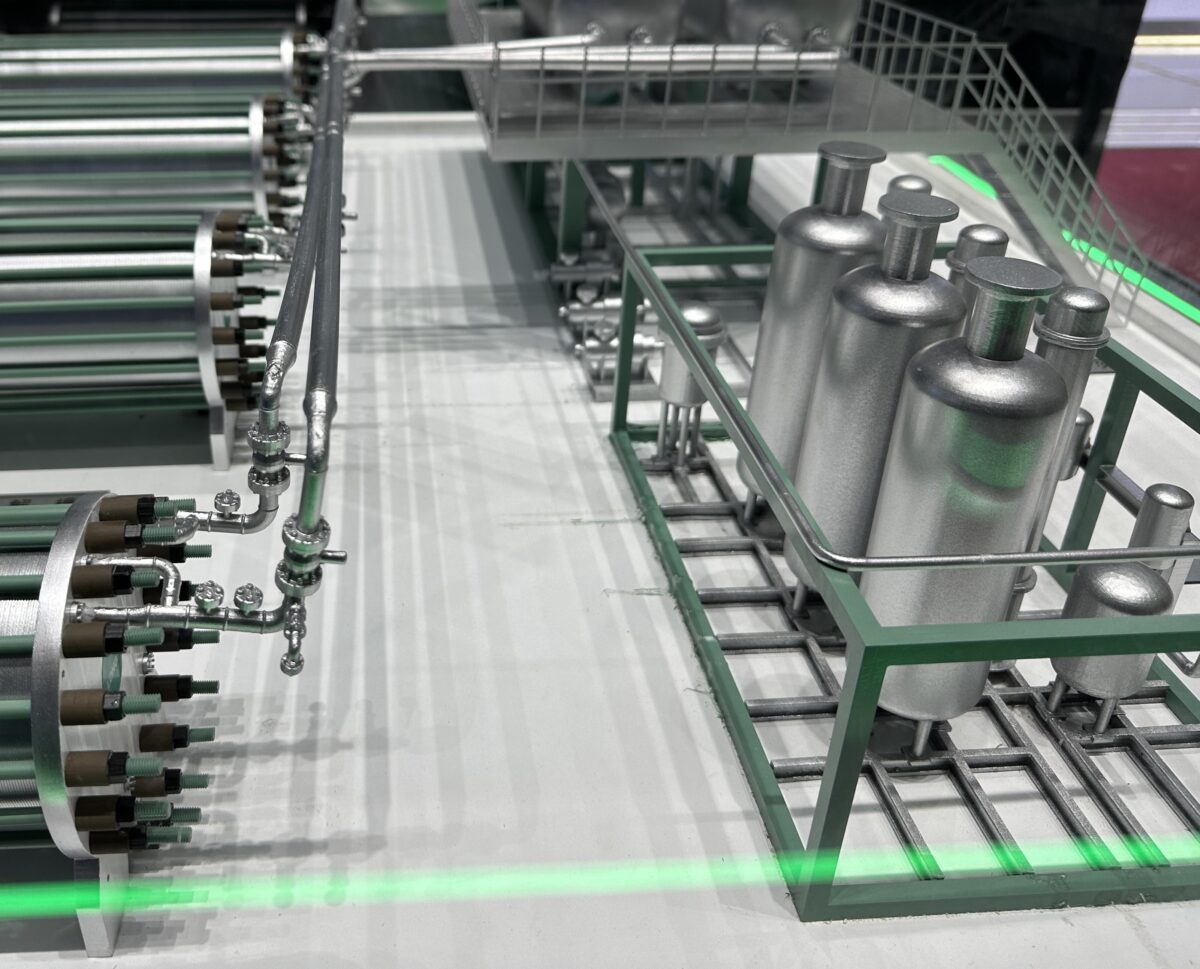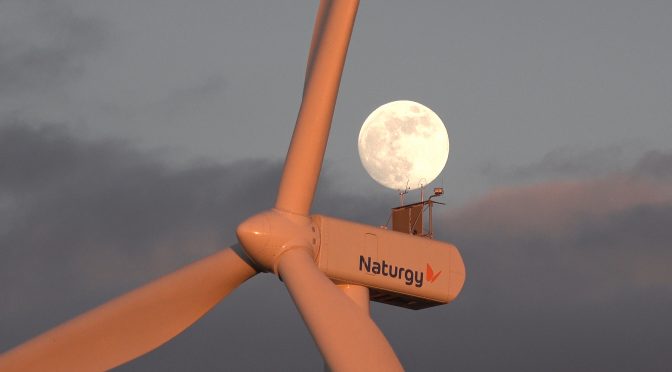
The Minister of Ecological Transition and Sustainability of the Junta de Extremadura, Olga García, and the mayor of Plasencia, Fernando Pizarro, visited today the works of the Merengue II wind farm and the Puerta del Jerte photovoltaic plant, which the energy company is promoting in the plasentino municipal term.
The Merengue II wind turbines will be installed in April, while the solar panels at Puerta del Jerte are one third complete.
Extremadura is the autonomous community that currently concentrates the most new Naturgy renewable projects in Spain.
The Minister of Ecological Transition and Sustainability of the Junta de Extremadura, Olga García, and the mayor of Plasencia, Fernando Pizarro, today visited the Merengue II wind farm and the Puerta del Jerte photovoltaic plant, to learn about the evolution of the works that the energy company is carrying out in Plasencia. The authorities were accompanied by Juan Ferrero, head of Naturgy’s Iberia Business Development, Elisa de Ferrando, head of Construction at Naturgy, and Ana Ruiz, delegate of Naturgy’s Project Development in Extremadura.
During the visit, attendees learned the details of the construction of both renewable energy generation projects, which represent a global investment of close to 57 million euros. The managers explained that the Merengue II wind farm is in a very advanced state and the eleven new wind turbines will be fully installed in April.
For its part, the Puerta del Jerte photovoltaic plant is at 30% completion in the placement of structures and panels. The degree of progress of the electrical substation is 90%, as well as the overhead evacuation line, while the works of the underground line will reach 50% during this month of March.
With all this, the commissioning forecast for both projects is scheduled for the third quarter of the year. Both projects will allow the energy company to add 80 MW to the 62 MW it already has in operation in Extremadura (Merengue wind farm and Miraflores photovoltaic plant).
According to the Minister of Ecological Transition and Sustainability of the Junta de Extremadura, “energy is already, and will be even more so in the future, the key to industrialize Extremadura. Renewable energies add up, they are a great competitive advantage for Extremadura as a region and for Extremaduran companies”. Olga García affirmed that “the future involves reinforcing the commitment to renewables and for this, both photovoltaic plants and wind turbines are necessary and complementary, as well as self-consumption that is multiplying month by month”.
For his part, the mayor of Plasencia stated that, for Plasencia, “it is of great importance to be an example of sustainability and green energy generation.” “The installation of wind farms in our municipal area also represents a significant investment in the maintenance and sustainability of protected areas, which give added value to the start-up of new facilities,” added Pizarro.
For Naturgy, in the words of the head of Iberia Business Development, “these new infrastructures represent an endorsement of the company’s firm commitment to the region of Extremadura as a benchmark in renewable matters”, as well as “evidence of the commitment to the energy transition and the decarbonization, which represents one of Naturgy’s main roadmaps”.
Also participating in the visit to the works, on behalf of the Junta de Extremadura, were Samuel Ruiz, general director of Industry, Energy and Mines, and on behalf of the Plasencia City Council, José Antonio Hernández, second deputy mayor of Plasencia, and Sergio López, Councilor for the Environment, Renewable Energies and the University of the municipality of Cáceres.
Environmental and biodiversity protection measures
The construction of these two facilities will also entail the implementation of various environmental measures in the area, in line with the policy for environmental protection and biodiversity in the areas where Naturgy develops its projects.
In the case of the Merengue II wind farm, actions will be carried out in different sections of the Jerte river as it passes through Plasencia, aimed at improving the state of conservation of the special protection area of the lesser kestrel and hornbill colonies, and the special conservation of the Jerte and Alagón rivers. These measures include the elimination of invasive plants, improvement and regeneration of the vegetation of the river promenade “La Isla”, in areas where the vegetation is in the worst condition, and the installation of nest boxes in the environment. Likewise, the marking of several black vultures with radio transmitters will be carried out, to know the use of space and the territoriality of this species.
In the case of the surroundings of the Puerta del Jerte photovoltaic plant, measures for the protection of amphibians are contemplated, among others (placement of anti-run-over barriers at all crossroads of access roads to the plant with water channels and construction of ponds to the reproduction); measures for the protection of reptiles (construction of five shelters); and measures for the conservation of birds (installation and maintenance of drinkers). As in Merengue II, radio-monitoring of species will be carried out, in this case breeding kites and black storks and their young, and sampling and analysis of the habitat of the black wheatear is also being carried out.
Naturgy commitment to Extremadura
Merengue II is the second wind farm in the Community, and Puerta del Jerte, the third photovoltaic plant that Naturgy is building in Extremadura. These two projects have enabled the creation of more than 860 direct and indirect jobs.
The two new facilities will produce more than 190 GWh/year of energy, which is equivalent to the annual electricity consumption of 54,500 homes. Likewise, they will make it possible to displace the use of other sources of conventional electricity generation, helping to reduce more than 120,000 tons of CO2 per year, which is equivalent to removing 50,000 vehicles from circulation for a year. During the useful life of both projects, estimated at 30 years, the emission of more than 1.8 million tons of CO2 per year will be avoided.
With a total of 11 wind turbines, and an approximate investment of 41 million euros, the Merengue II wind farm will have a capacity of 50 MW. It will produce 128 GWh annually, and will avoid the annual emission of about 81,500 tons of CO2.
For its part, the Puerta del Jerte photovoltaic plant will involve an investment of approximately 16 million euros. With a capacity of 30 MW, it will generate 62 GWh per year, avoiding the emission of almost 39,500 tons of CO2 into the atmosphere.
Extremadura is a region of high strategic value for Naturgy. In addition to the two facilities in Plasencia whose first stone was laid today, the energy multinational is building another photovoltaic facility, Las Jaras de Badajoz, located in the municipalities of La Albuera and Badajoz, with an installed capacity of 50 MW. This facility will produce approximately 123 GWh/year of energy, which is equivalent to the annual electricity consumption of more than 35,200 homes, and will prevent the emission into the atmosphere of nearly 78,350 tons of CO2 per year.
In addition, the Miraflores photovoltaic plant, in the municipality of Castuera (Badajoz), has been in operation since last October. This plant has an installed capacity of 22 MW and will produce around 47 GWh of energy per year, which is equivalent to the annual electricity consumption of more than 13,500 homes.
Naturgy also has other projects in different stages of administrative processing and construction, totaling another 450 MW. On the one hand, it has recently started work on the photovoltaic solar plants of Los Naipes, Los Naipes II and El Encinar I, located in the municipality of Badajoz, which have an installed capacity of 50 MW each. And on the other, the company plans to begin work on the Campo de Arañuelo photovoltaic plant before summer, between the municipalities of Aldeacentenera and Torrecillas de la Tiesa, in Cáceres, with 300 MW and which is the company’s most powerful is currently being processed in our country.
Commitment to the energy transition
Naturgy has a strategic roadmap with which the company will promote its role in the energy transition and decarbonisation, with the ambitious goal of achieving emissions neutrality by 2050 and an installed capacity of close to 60% from renewable sources.
Currently, the company has more than 5.5 GW of power in operation and has a portfolio of more than 195 projects in Spain, Australia and the United States. In Spain, it has some thirty wind farms and photovoltaic plants under construction, equivalent to more than 1GW of additional capacity, which are expected to come online in the coming months.
In line with its environmental commitment, the company recorded a 24% decrease in its total, direct and indirect emissions in 2022. In terms of biodiversity, Naturgy carried out nearly 350 initiatives in 2022, which contribute to the preservation of natural capital in all those countries in which it is present.

